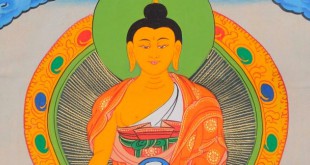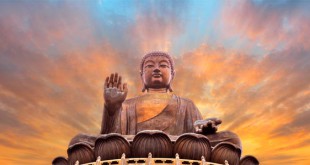Random Facts About Buddhism Quiz – Enjoy some random facts about the Buddhist religion. Perhaps you will obtain quick enlightenment!
Read More »Advanced Buddhism Quiz
Advanced Buddhism Quiz – Buddhism quiz for Buddhists and those interested in the life of the Buddha and the teachings of the Buddha. Buddhist trivia and general knowledge quiz.
Read More »Which insect has the largest wingspan?
It is the atlas moth. This huge insect, which lives in the tropical rain forests of Asia, has a wingspan of 30 cm (12 in).
Read More »Which huge flightless bird lays world’s largest egg?
Ostrich is the world’s biggest living bird that lay world’s largest egg. The egg is about 8 in (20 cm) tall and weighs 3 LB 8 oz (1.6 kg), 30 times as much as a hen’s egg.
Read More »Which fish spits at insects?
The archerfish from South-east Asia has the remarkable ability of shooting down insects from overhanging vegetation with water pellets. Its aim is quite accurate and it can usually dislodge a beetle or a fly about four feet away, so that it falls in the water. The archer fish then pounces on the insect and eats it. It is interesting to …
Read More »Which fish breathes air?
Most fish breathe by extracting oxygen from water, by means of their gills. Gills are delicate filaments of tissue through which blood passes. As water flows over the gills, oxygen diffuses into the blood. However, some fish have an additional method of obtaining oxygen; they use a lung, just as we do. Fish which breathe in this way are, not …
Read More »Which dog cannot bark?
The dingo is one of the very few dogs in the world that is unable to bark. It is not a silent dog, however, as it makes up for not barking by howling and whining very loudly indeed. Dingoes are a very ancient breed of wild dog from Australia. They are probably quite closely related to the primitive dogs from …
Read More »Which crab has a ‘mobile home’?
The hermit crab. Instead of scuttling about protected by its own tough shell like other crabs, it has a soft body which it protects inside the empty shells of whelks and other mollusks. The hermit crab finds a suitable shell and eases its body inside. Then, with just its head and legs sticking out, it trundles about the seabed looking …
Read More »Which country has the most cattle?
Cattle are important farm animals, because they supply meat, dairy products, leather and other materials. They are reared in many parts of the world, with India being top of the cattle league. Although they are used as beast of burden, most Indian cows are thin and produce little milk. To Hindus, cows are sacred symbols of Mother Earth. In India, …
Read More »Which country has the highest male-female ratio?
The male-female ratio is the proportion of males to females in a given population at a specified stage in life e.g. at conception, at birth and at any chosen stage between birth and death. This is usually expressed as the number of males per 100 females. Qatar has the highest ratio with 187 males to 100 females. However, the ratio …
Read More » Kids Portal For Parents India Kids Network
Kids Portal For Parents India Kids Network

